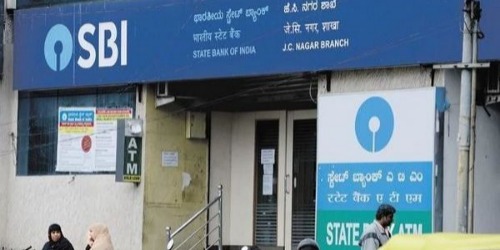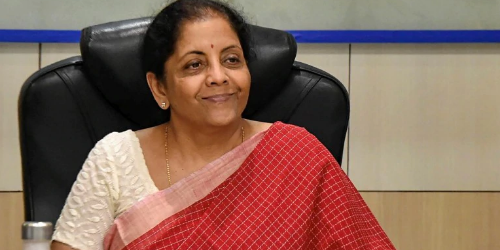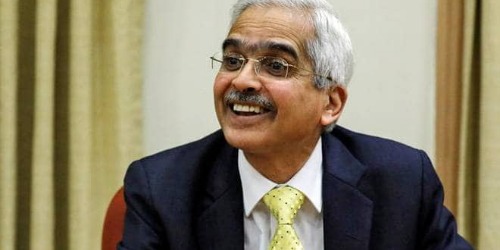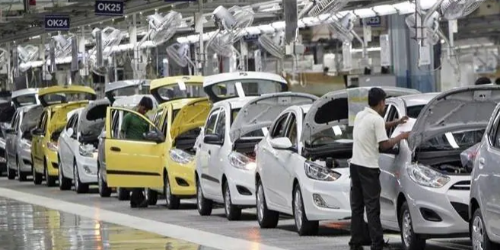SBI Savings Accounts To Fetch Lesser Interest From November 1

State Bank of India (SBI), the country's largest lender, will reduce the interest rates on deposits in retail savings accounts from November 1, 2019. In a statement last week, the bank said that "in view of the adequate liquidity in the system", interest rates on savings accounts with balances up to Rs. 1 lakh would be lowered by 25 basis points (bps) or 0.25 percentage points. The cut in SBI interest rate follows reduction in the repo rate - the key interest rate at which it lends short-term funds to commercial banks - by the Reserve Bank of India (RBI).
On savings deposits, SBI has announced a revision from 3.50 per cent to 3.25 per cent on balances up to Rs. 1 lakh from November 1, 2019, according to its statement. The interest rates on savings account deposits above Rs. 1 lakh has been kept unchanged.
Earlier this month, the RBI lowered the repo rate by 0.25 percentage point to 5.15 per cent, marking the fifth straight bi-monthly reduction in the key interest rate so far this year. The RBI has cumulatively lowered the interest rate by 135 basis points this year.
In May this year, SBI had linked its large savings deposits rates to the RBI's repo rate, offering an interest rate of 275 basis points lower the repo rate on savings account deposits with balance of over Rs. 1 lakh.
SBI has also reduced fixed deposit (FD) interest rates across select maturities. The SBI FD rates have been lowered by 10 basis points (or 0.10 percentage point) across a select tenor in the retail segment. In bulk segment, SBI FD interest rates have been reduced by 30 basis points (or 0.30 percentage point).
For retail domestic fixed deposits up to Rs. 2 crore, SBI currently pays interest rates to the tune of 4.50-6.40 per cent to the general public over a maturity period of seven days to 10 years, according to the bank's website - sbi.co.in.
- 0
- Leave a comment
Festive cheer limited to e-commerce players this year

Contrary to expectations, the ongoing festive season has failed to bring cheer to most consumer industries, be it consumer durables or travel. The deepening economic slowdown that has gripped the country has clearly caused households to tighten their purse strings - while sales typically spiked 15-20 per cent over the September to January period in the past, growth this year has been largely lacklustre at around 3-9 per cent across these consumer segments.
According to stakeholders, although business is not shrinking, it is growing painstakingly. Much now rides on how the Diwali week pans out followed by the Christmas to New Year run up, but consumer companies and mall owners are a skeptical lot. The general pessimism of the consumers is similarly weighing heavily on the tourism sector where the bookings have gone down sharply over the past two months.
The e-commerce sector is the only one that is bucking the trend to post strong growth despite the downturn. According to a RedSeer report, the whole festive month till end-October is expected to generate up to Rs 39,000 crore in sales. Significantly, e-tail festive sales are largely a two-player market with Flipkart and Amazon dominating over 90 per cent of the market share during this period.
Here's a detailed look at how these three segments are faring:
Consumer products
The festive season generates close to 50 per cent of revenues of most mall operators, but low consumption appetite coupled with prolonged monsoons and the Shradh period, which ended on September 28, impacted footfalls. At most malls and lifestyle retail outlets, footfalls had reduced to low single digits, ranging between 2-6 per cent in the July-September period.
However, the first half of October has been comparatively more optimistic. The Dusherra week saw footfalls increasing anywhere between 6-10 per cent for the likes of Palladium High Street Phoenix and Oberoi Mall in Mumbai, while Nexus Malls claims to have seen a 14-15% spike year-on-year. Consumer durable retailer, Croma, reported an impressive like-to-like sales growth of 26 per cent this Dusherra while footfalls jumped 10 per cent.
The demand for apparel, too, has also been muted of late. Cantabil Retail, a homegrown apparel manufacturer, reported that footfalls at its stores have not grown this festive season, although sales have been able to match moderate expectations. "Customers are moderately spending towards fashion and not aggressively for last few months," the company added.
Retailers are now pinning their hopes on decent Diwali sales - the festival typically accounts for 60 per cent of festive sales in malls. While consumption mood may have improved thanks to government incentives such as the corporate tax rate cut as well as increasing willingness among banks to offer loans, mall owners don't expect overall festival season revenues to exceed 10-12 per cent.
"I expect Diwali sales to be good," says Nandi, Business Head, Godrej Appliances, coming on the heels of tepid Dussehra sales for the company. According to him, Dusherra sales are good only if it comes in the second week of the month, especially since bonuses are typically disbursed just before Diwali. This year, the festival fell in the first week of the month, when most people were yet to receive their salaries and hence sales took a hit, especially in the budget category.
Travel and tourism
The beginning of the peak season for this sector - October to March - has come at the most inopportune time. Growth in air passenger traffic has plummetted to 3.24 per cent in the January to August period this year, down from 21.2 per cent in the year-ago period. Similarly, growth in hotel room nights has halved to 6 per cent between July and September as opposed to 12 per cent in the first six months of 2019. This is based on data for the top three hotel chains, which control 40 per cent of the total inventory.
Given the sentiment, both personal and business-related travel has taken a hit, and the outlook for October is even more dismal. Experts predict that hotels, particularly business hotels in cities like Mumbai, Delhi, Bangalore, and Chennai, will record their worst sales of the year in the current month.
E-commerce
According to research firm RedSeer, e-tailers led by Amazon and Flipkart achieved Rs 19,000 crore of gross merchandise value (GMV) during the six days of the recently concluded festive sales. That's a 30 per cent increase over last year, with significant share coming from customers in Tier 2+ cities. This is about 80 per cent of RedSeer's forecast of $3.7 billion sales in the first phase of festive sale this year.
According to RedSeer Consulting founder and CEO Anil Kumar, the numbers indicate that consumer sentiment on online shopping remains bullish despite the challenging macroeconomic environment.
Walmart-backed Flipkart's Big Billion Days event this year saw a 50 per cent growth in the number of new customers as well as the seller count as compared to 2018. Arch rival Amazon's Great Indian Festival also made waves this year. "The first wave of the Great Indian Festival was our biggest celebration ever with Amazon.in - witnessing highest share of transacting customers and purchases across all marketplaces in India; orders from 99.4% pincodes; over 65,000 sellers from 500+ cities receiving orders in just five days and customers from over 15,000 pin codes joining Prime," Amit Agarwal, Senior Vice President and Country Head, Amazon India, said last week.
A big trend in the online festive sales was the increasing preserence to pay for purchases in installments. The share of transactions via options such as EMIs, Flipkart Pay Later and Cardless Credit has increased by 70 per cent during The Big Billion Days 2019 against last year's event. Similarly, Amazon reported that the number of customers shopping using EMIs saw a 1.5X uptick compared to of Great Indian Festival 2018. Moreover, customers from over 15,000 pin codes joined Prime with a 69 per cent increase in signups from small towns.
The Confederation of All India Traders (CAIT) has once again accused online sales of snatching festival trade courtesy predatory pricing and deep discounting offered by the etailers. "There is a lot of disappointment in all the markets of Delhi as there is no glimmer of festive sales and despite the festivals, all the major retail and wholesale markets are completely deserted," says the body's National General Secretary Praveen Khandelwal. He added that as the the festive season of Diwali draws to a close, the hope of the traders in the capital to notch up good business is getting bleak because the market is very low in the subscriptions and traders have ample stock of goods.
Nirmala Sitharaman Says Banks Have Sufficient Liquidity

Finance Minister Nirmala Sitharaman said on Monday that there is sufficient liquidity in the banking system. Addressing the media after a meeting with chiefs of public sector banks, the Finance Minister said banks have been asked to provide a bill discounting facility to the micro, small and medium enterprises (MSME) sector against dues from large corporates, in order to ensure liquidity for small businesses. Efforts are being made to ensure that dues are released to the MSME sector by large corporates, Ms Sitharaman said.
Here are 10 things to know:
1. All efforts would be made to ensure that the MSME sector gets its dues ahead of Diwali, the Finance Minister said.
2. According to the returns filed by large corporates to the Corporate Affairs Ministry, there are dues worth Rs. 40,000 crore to the MSME sector, she said.
3. Talks between the Finance Ministry and the state-run lenders come at a time the government has announced a slew of measures to revive economic growth.
4. The finance minister said on Monday that the the bank merger process was "going smoothly".
5. In August, the government announced a mega consolidation plan in a bid to strengthen the financial system and push economic growth.
6. The four mergers proposed to combine Punjab National Bank with Oriental Bank of Commerce and United Bank; Canara Bank with Syndicate Bank; Union Bank of India with Andhra Bank and Corporation Bank, and Indian Bank with Allahabad Bank.
7. The consolidation plan would lead to 12 public sector banks in the system instead of 27, the government said.
8. India's GDP or gross domestic product expanded 5 per cent in the quarter ended June, marking the lowest pace of growth in more than six years.
9. The Finance Minister has earlier said that GDP growth is likely to pick up in the October-March period as consumer demand is expected to improve in the festival season.
10. Meanwhile, the Finance Ministry said that loans worth Rs. 81,781 crore were disbursed during the nine-day outreach programme organised by banks.
RBI Monetary Policy: Repo rate cut by 25 basis points; loans to get cheaper

As per expectations, the Reserve Bank of India's (RBI) Monetary Policy Committee (MPC) on Friday cut the key repo rate by 25 basis points to 5.15 per cent -- its fifth straight cut this year -- and maintained its 'accommodative' stance. "The MPC also decided to continue with an accommodative stance as long as it is necessary to revive growth, while ensuring that inflation remains within the target," says the MPC report.
The MPC noted the "negative output gap has widened further. While the recent measures announced by the government are likely to help strengthen private consumption and spur private investment activity". All six members of the MPC voted to reduce the policy repo rate and to continue with the accommodative stance of monetary policy.
The central bank, which in its August MPC meet had predicted GDP growth of 6.9 per cent in FY20, revised its forecast to 6.1 per cent. The RBI's projection of 5.8 per cent for the first quarter went horribly wrong when India registered six-year low of 5 per cent GDP. The reverse repo rate has also been reduced to 4.90 per cent, and the marginal standing facility rate and the bank rate to 5.40 per cent, said the RBI.
Inflation, however, remains well within the RBI's range of 4(+/-2) per cent. "These decisions are in consonance with the objective of achieving the medium-term target for consumer price index (CPI) inflation of 4 per cent within a band of +/- 2 per cent, while supporting growth," says the MPC report, adding the inflation was seen below 4 per cent in the rest of the financial year and early months of FY21.
During his press conference, RBI Governor says: "Since the MPC's last meeting in August 2019, global economic activity has weakened further. Heightened uncertainty emanating from trade and geo-political tensions continues to cloud the outlook. Among advanced economies, the slowdown in the US economy in Q2 appears to have extended into Q3, weighed down by softer industrial production."
Motilal Oswal, Managing Director at Motilal Oswal Financial Services said, "RBI has cut policy repo rates by 25 bps to 5.15% but the issue is transmission of these rates into the system. RBI has been asking banking system to offer loans at a level that reflect the benchmark cut, but the system is reluctant to pass on, due to risk aversion. Equity markets are cautious and watchful about the earnings season which at this juncture looks less enthusiastic. There is a possibility that equity markets will trade cautious and range bound. In medium to long term, I see good investment opportunity in equities."
In its August MPC meet, the RBI had surprised everyone by going for a 35-basis-point cut to 5.40 per cent. The apex bank's decision to cut the repo rate further seems to be in sync with the government's recent measures, including a reduction in the corporate tax, to promote credit offtake to boost economic activity during the festive season amid the ongoing slowdown.
After a crash in sales, auto dealers now witness 10% drop in service spends

Automobile dealers across the country facing the brunt of the slowdown in sales of cars and two-wheelers have also witnessed a 10 per cent drop in spends on service by customers.
The reluctance by current owners to spend more on their cars is another dampener for the community that typically makes more money by servicing cars than by selling them. Typically dealers earn 31 per cent of their profits from after-sales and 25 per cent from sales. According to the JD Power 2019 India Customer Service index Study, there has been a 10 per cent drop in the average amount spent per service visit compared with 2018. On average, customers spent Rs 5,000 per service visit this year, compared with Rs 5,600 in 2018. The decline is greatest among after-sales customers who are 39 years or older - non millennials - whose spend declined 17 per cent year-on-year.
"Typically, dealers rely on service work to keep their businesses profitable especially during a downturn in new-vehicle sales," said Kaustav Roy, Director and Country Head for India, J.D. Power. "A drop in average service spend bodes negatively for overall dealer profitability. More than ever, dealers need to focus on delivering an excellent service experience to retain customers and encourage loyalty and advocacy."
Among the brands, Hyundai was ranked highest in overall service satisfaction with a score of 903 followed by Tata at 870 and Mahindra at 863. Higher score indicates the likelihood of customers recommending their brand to others. The market average score was 826.
India's largest carmaker Maruti Suzuki (799) along with Datsun (799), Honda (796) and Renault (787) formed the bottom quartile of the service index. The study is based on responses from 7,177 new-vehicle owners who purchased their vehicle between March 2016 and August 2018. The study was fielded from March through August 2019. It measures new-vehicle owner satisfaction with the after-sales service process by examining dealership performance in five factors (listed in order of importance): service quality (30 per cent); service initiation (18 per cent); service facility (18 per cent); service advisor (17 per cent); and vehicle pick-up (17 per cent).
Majority of 89 per cent of the customers who rated their experience in the top quartile of satisfaction (929 points and above on a 1,000-point scale) are more likely to return for post-warranty service work. 90 per cent of them were also likely to recommend the service centre to a friend or a relative. Other findings of the study indicated a reluctance among customers to go digital for after sales service with customers rarely using digital channels to set appointments despite indicating higher satisfaction when used. Satisfaction was 875 among just 1 per cent of customers who used a manufacturers' app and 868 for 2 per cent who used a dealer's website. The majority (81 per cent) still prefer to call a dealer and reported a satisfaction score of 831. Customers who walk in without an appointment (14 per cent) were the least satisfied with a score of 786.
The study also stated fewer number of customers now wait at dealerships while the cars are being serviced- down 10 percentage points to 21 per cent in 2019. However, satisfaction is typically higher among customers who wait for their vehicle service (837) against those who opt to leave and then return (821).


